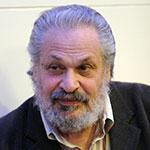When it comes to race, too many people still mistake bigotry for science, argues Washington University in St. Louis anthropologist Robert W. Sussman, PhD, in his new book, “The Myth of Race: The Troubling Persistence of an Unscientific Idea.”
 “The book offers readers an opportunity to better understand where modern prejudices come from,” said Sussman, professor of physical anthropology in Arts & Sciences.
“The book offers readers an opportunity to better understand where modern prejudices come from,” said Sussman, professor of physical anthropology in Arts & Sciences.
“It shows where racist ideas first originated and how they developed through the ages. It illustrates how these racist myths of the past are just as old and outdated as those about the earth being flat.”
A noted authority on the eugenics movement, Sussman has written extensively on anthropology’s role in building the scientific consensus that perceived racial distinctions among humans have no biological basis.
His latest book, published recently by Harvard University Press, traces the early origins of racist theories, moving systematically through the Bible-based arguments that fueled the Spanish Inquisition, the teachings of botanist Carl Linnaeus and philosophies of Immanuel Kant. It reveals how 16th-century theories of racial degeneration became a crucial justification for Western imperialism and slavery.
These theories, Sussman writes, later fused with Darwinism to produce the highly influential and pernicious eugenics movement. Believing that traits from cranial shape to raw intelligence were immutable, eugenicists developed hierarchies that classified certain races, especially fair-skinned Aryans, as superior to others.
These ideologues proposed programs of intelligence testing, selective breeding and human sterilization policies that fed straight into Nazi genocide.

Sussman, who has taught courses about race and racism for many years, describes the book as an attempt to bring together in one place all the most important developments in the history of racism.
“It includes all the aspects of the history of race, including where it started, where it is today and the people who fought against it and why they fought against it, especially right after the eugenics movement and the Nazi movement in Germany,” he said.
Sussman devotes the second half of his book to exploring the focuses on the decades-long effort to debunk popular racist theories, beginning in the early 19th century by anthropologists such as Franz Boas, and more recently through the scientific techniques of modern biology and genetics.
He uses the final three chapters of his book to argue that a well-funded and secretive network of foundations and think tanks continues to use long-held racist beliefs to support a white supremacist agenda first set in motion during the early 1930s by the American manufacturing multimillionaire Wickliffe P. Draper.
“Such organizations as the Pioneer Fund, the American Renaissance Foundation and FAIR (Federation for American Immigration Reform) have successfully kept age-old racist theories in the eyes and minds of the public and continue to pursue the goals of the eugenics movement in the early 20th century,” Sussman writes.
As immigration reform once again heads to the forefront of American politics, Sussman warns that this fringe coalition of racist groups is still working to sabotage efforts to reach a rational compromise on critical immigration issues.
“Racism has not gone away in the United States, and with a black president in his second term, open, blatant racism has once again become very prominent in many spheres of American life,” Sussman argues.
A key takeaway from this book, he adds, is that biologically speaking, it’s time to accept that Homo sapiens is one — and only one — race.
“It is only by recognizing this fact and understanding its history that we might one day have a society in which all people are treated with dignity, equality and kindness regardless of their ethnicity or culture,” Sussman concludes.